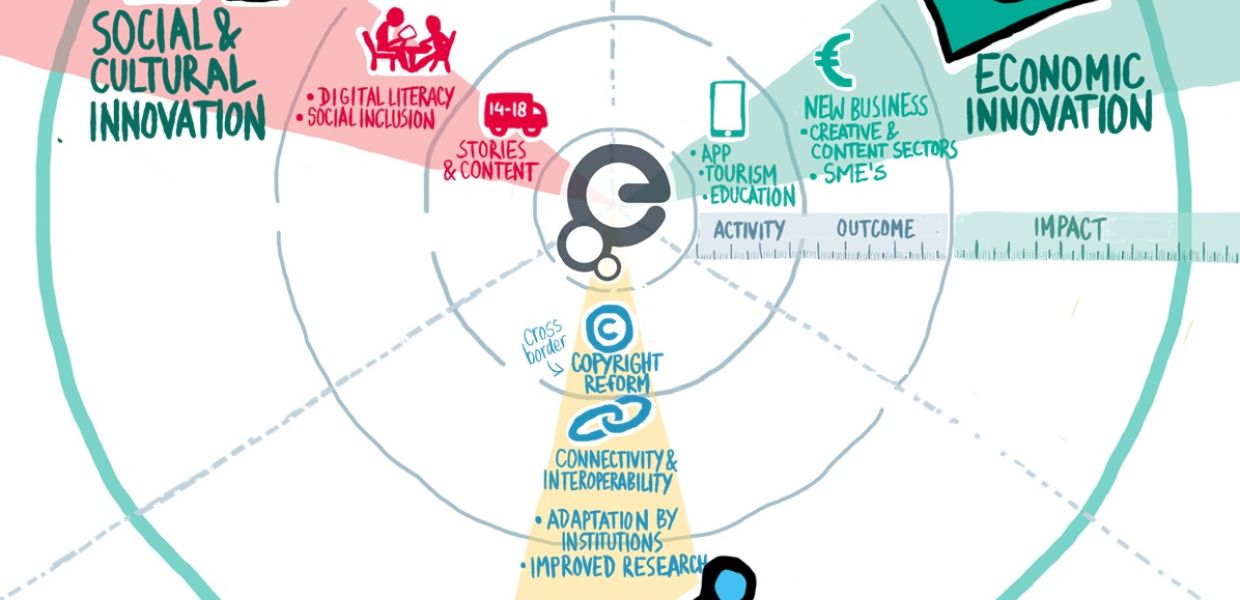Placing culture at the heart of Europe's Digital Single Market

In recent weeks, there’s been a great deal of discussion about Europe’s Digital Single Market (DSM) - one of European Commission President Jean-Claude Juncker’s top three priorities for his five year term. On May 6th, the Commission set out 16 initiatives ‘to make it happen’, the first step in a roadmap working towards legislative change.
For the European Commission, there’s no time to waste. EU Digital Commissioner Günther Oettinger has stressed the need to act decisively so Europe can start to play catch up, particularly with the US, and fulfil its potential as “world leader in the digital economy”.
So where do we as a community with a strong digital focus fit in?
Our Network has long supported Europe’s Digital Agenda. And it’s clear that, as part of that agenda, digital cultural heritage has a distinct role to play in the future of a harmonised market.
The DSM Strategy is divided into three pillars; importantly the second, which aims to boost development of innovative networks and online services, and third, aimed at maximising growth potential of the digital economy, sit in fruitful dialogue with our own priorities.
As a Network we have been spreading the message for some time now that access to cultural content drives innovation, nurtures cultural diversity and enriches learning. Importantly, by offering a shared resource available across borders to the citizens and businesses that need it, we make sure that these benefits are not limited to a single region or nation - which is fundamental to the vision the Digital Single Market Strategy sets out.

We know that our shared culture resonates across borders and we have worked hard to ensure that we make cultural content available to all by creating Europe-wide standards and promoting interoperability. In fact, Europeana is a global leader in the field and the Europeana Data Model has been adopted by institutions in the US and South Korea among other countries.
Culture can bridge divisions between sectors too. The work that we perform together offers wide-ranging benefits to key sectors; it can boost tourism - Europeana’s content reaches travellers through apps like Google’s Field Trip - strengthen research and enhance education (just read the recommendations Europeana has published for each if you want to know how!).
Through Europeana Labs and my work with Europeana Creative, I have seen just how much potential there is for us to act as an all-important bridge between heritage institutions and Europe’s creative industries, giving them the tools and content they need to create services and apps. Exciting pilot projects like VanGoYourself and Historiana are just two innovative examples of this, showing the kinds of things that can be done when our collections are combined with the imagination of creative entrepreneurs.
Making our value known
The Commission’s Digital Agenda has talked about creating ‘digital highways’, and it’s a useful way to think about what we, as a Network and community, all do and the contribution that we already make to the Digital Single Market. By working together on issues such as cross-border interoperability, multilingualism and towards a cloud-based infrastructure to share data, as highlighted in Strategy 2020, we are building these important highways through Europe’s heritage, opening them up to everyone today, and ensuring they endure for generations to come.
Harnessing this economic and social potential of culture is where we must continue to make our voices heard. It’s vital that we keep on working together to provide good quality, standardised data available in all EU languages. It is also essential that the EU copyright rules applying to cultural heritage institutions provide them more room to make their collections available online.
It is just as important that we continue to make policymakers and politicians aware of our valuable contribution to the Digital Single Market and to the broader Digital Agenda. The current conversations at EU level throw up as many issues as they answer. We need to make sure we are part of that conversation, highlighting our sector’s vision of high quality cultural content available to all and the solutions we are driving to make that possible.
